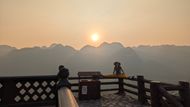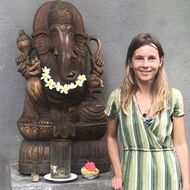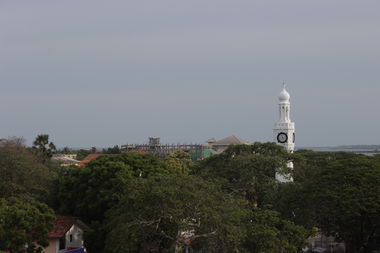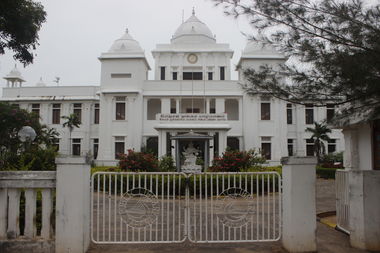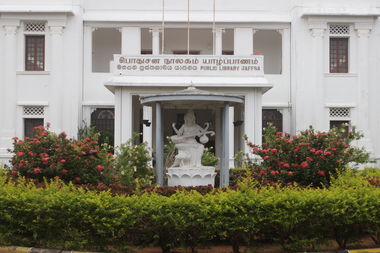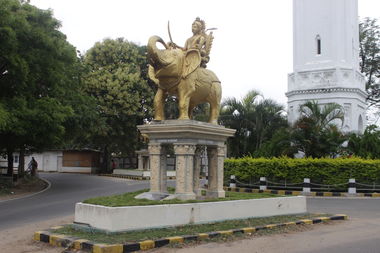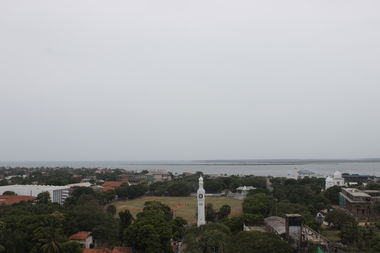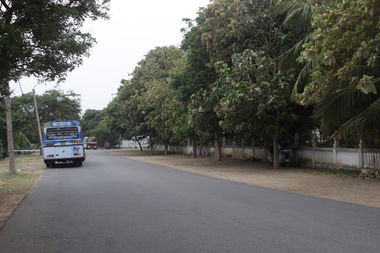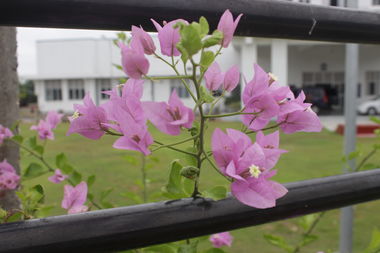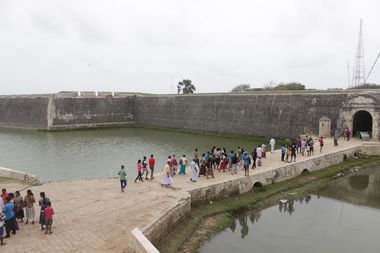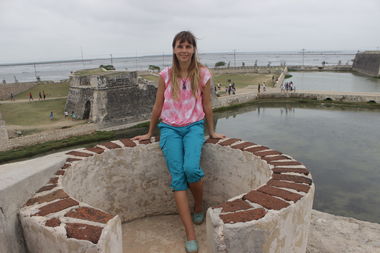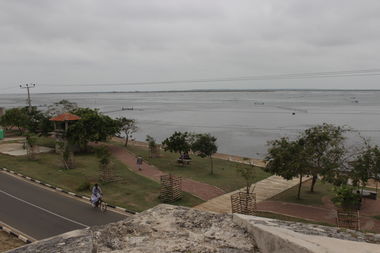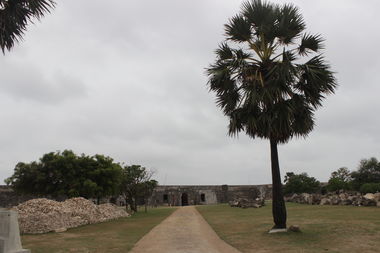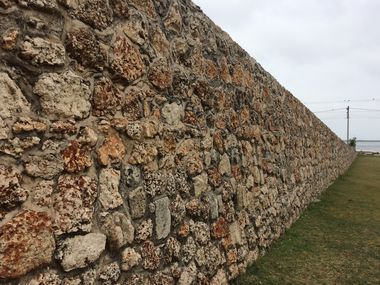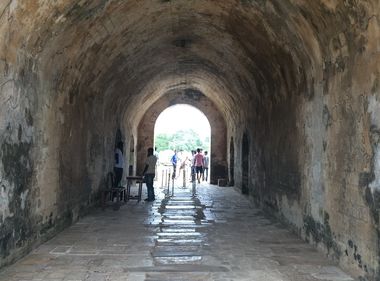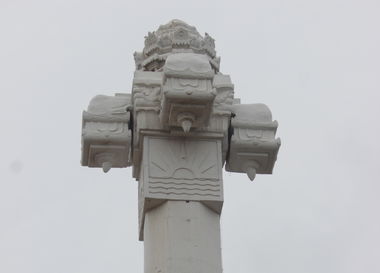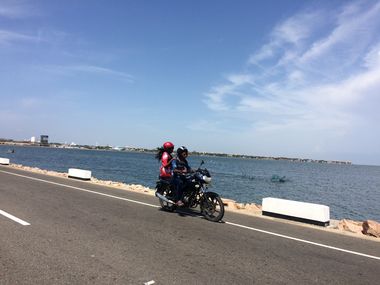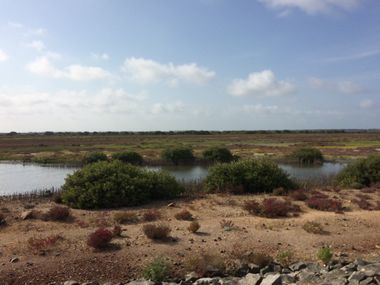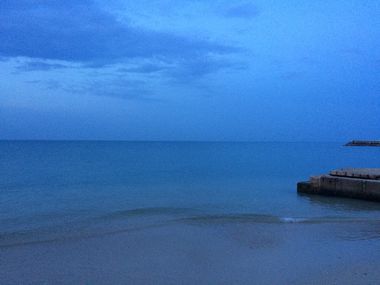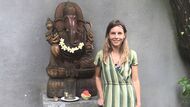Jaffna
Different Sri Lanka
The decision to head for the very northwest of Sri Lanka was spontaneous though we were willing to see Jaffna for a long time. Therefore, the night train was already taking us far to the hot north of the country. Closer to Jaffna when the silhouettes of the high-rise ornamented Hindu temples (Kovils) appeared in the predawn darkness it was clear we were approaching the oasis of Tamil culture.
The population of Jaffna is Tamil people. They are usually Hindu or Christian so you can see many Catholic churches and cathedrals alongside the Hindu temples.
We were a bit worried if Jaffna would be safe enough and interesting since for 30 long years the region had suffered the civil war. However, Jaffna was quite a surprise!
Early in the morning we got off to step on a tidy paved railway platform. That was really polite of tuk-tukers to wish us good luck and leave us alone when we said that we were going to have a walk.
The first thing to catch our eye was the cleanness of streets. There were roadsides and sidewalks that made it easy to walk a kilometer and a half. The streets were swept up and free of garbage. So it looked like the job of a street cleaner happened to exist in Jaffna. All in all, we were amazed by the local order and cleanness!
Our road led us along the chaste Catholic churches and bright colorful houses. At some point we stopped in surprise seeing the convolved snakes in a river nearby! At first those creatures even seemed to us two-headed. Unfortunately, the local herons came over to have lunch so the snakes rapidly withdrew leaving us no chance to have a better look at them.
We left our luggage at the hotel and hurried to see downtown Jaffna and the Dutch fort that looked similar to the one in Galle in the south of the country with the only difference of a long ditch and walls made of coral stones. In fact, every single fortress in Shri-Lanka is star-shaped and very similar to hundreds of pentagon shaped forts all over the world. (Followers of the alternative history say such constructions have nothing to do with the Dutch😏). The bastions were seriously damaged, probably during the war, and were under reconstruction now. A strict notice placed near the fort instructively demanded “no smoking, no alcohol, no hugs, no kisses, no video”😁. I thought we’d survive somehow. Luckily, I don’t drink alcohol for a long time and there was no draft to kisses early in the morning😉. Judging by the prevailing order around, we realized that Jaffna was not joking…
The local ocean waters are shallow and quiet with a coral bottom. In some places it’s swampy like the Gulf of Finland in Saint-Petersburg. The best beaches are 20 kilometers away from the city center.
The very north-west of Jaffna is a variety of islands some of which are connected by lengthy causeways or by a noisy ferry. The initial impression when first entering such a bridge is that it’s a long pier heading far into the sea. On the right and on the left there are small swampy lagoons crowded by fishermen, herons and colorful, sometimes bright blue birds looking for fish and crabs for dinner. Compared to the other parts of the island Jaffna’s dry weather and scanty plants make it look similar to the Mediterranean climate of Cyprus or Crete but for the vast variety of palms. The most famous local Toddy palm is used for production of syrups and sugary drinks.
A perfect view from the roof of the hotel gives a chance to see the regularity of the local planning, the impressive colonial era buildings, the outstanding white clock tower which bells melodiously chime every hour and the library with a magnificent garden. Jaffna keeps some dear old Blighty spirit. If not for the colorful multilevel Tamil temples (Kovils) there would be an impression of visiting a colonial English city. The roads in Jaffna are straight and wide with sidewalks or curbs suitable for cycling especially that the traffic in Jaffna is not very intensive. There is a reasonably good park with a playground and even a police station in Jaffna is all covered with fragrant beautiful flowers!
Jaffna is very unique! It is a special nook of Sri Lanka that differs from the rest of the country. This area looks like small India spreading out on the northwestern islands. Jaffna is inimitable and authentic and it is not really discovered by tourists yet since the civil war ended only nine years ago! The local people are friendly and intelligent. The drivers and strangers don’t bother you with intrusive attention. Some of them only sometimes asked us politely to take a picture with them (mostly near temples and sights) while the others even felt shy to ask for a photo🙂. It’s not that easy even to find a tuk-tuker at first for people think if you walk on foot it means you want it that way. One driver just waved to us joyfully and drove away. Maybe he was in a hurry for his own business. Therefore, those who like walking on foot have a great opportunity to do that in Jaffna. The garrison of the Sri Lankan army is still cantoned there. In my opinion, they are partly in charge for the peace in the area.

Cu Chi Tunnels
